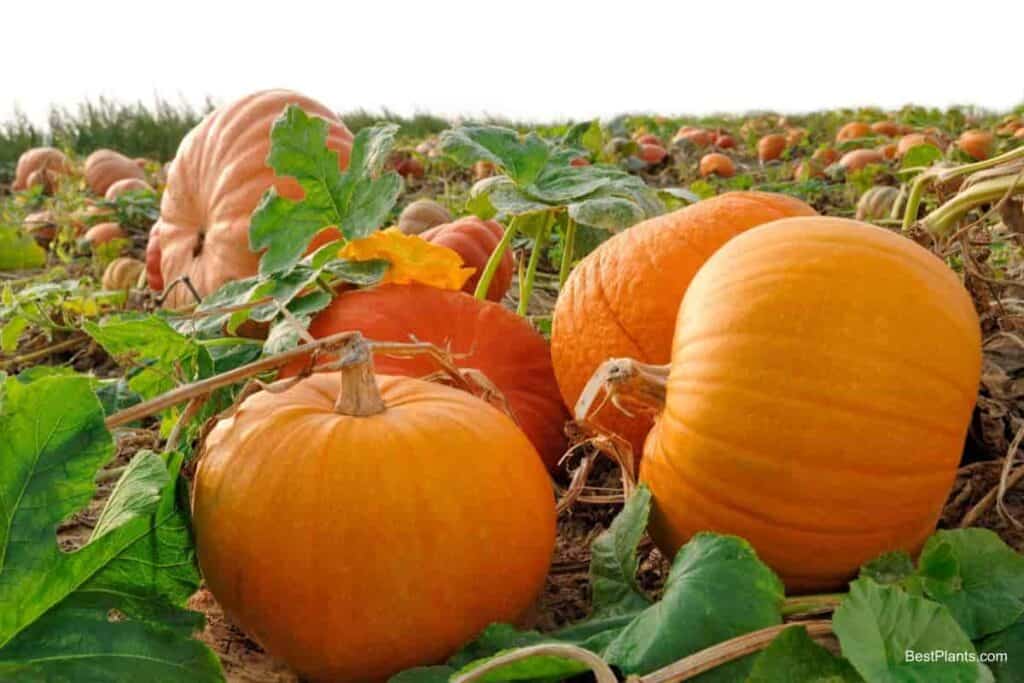Frost can be expected at almost any time now in the northernmost part of our area. This means, among other things, that preparations should be made to bring house plants under cover if they spent the summer outdoors.
It is most desirable to get them into their winter living quarters before it is necessary to subject them to the relatively dry air which accompanies artificial heat.

Protecting Tender Plants
In many sections, the first frost is often followed by weeks of fine weather. Many tender plants can give us two or three more weeks of beauty if they are protected from the first frost.
Newspapers, sheets, or bushel baskets are good protectors and, since the ground is still warm, will keep frost away from the tops of the plants.
Gathering Pumpkins
Gather squash and pumpkins as soon as their stems begin to wither or after the first frost and store them in a dry place at a temperature ranging around 60°. Ornamental gourds should be cut as soon as their stems begin to wither.
Leave a piece of stem attached to the fruit. Handle them carefully to avoid bruising.
Lawn Making And Patching
The earlier you get grass seed planted the better it will grow, provided the soil has been previously moistened by copious rains or with the hose. Do not attempt to sow seed in dry soil unless you have facilities for keeping the surface moistened using a fine sprinkler.
In small areas, a covering of coarse burlap for the first ten days will help to keep the soil from drying out rapidly.
Sowing A Cover Crop
Just as soon as a crop is harvested, whether vegetables or flowers, some kind of cover crop, such as winter rye or hairy vetch, should be sown. This will germinate before winter sets in and protect and improve the soil over winter.
Shearing Hedges
This is the last call for shearing hedges, both deciduous and evergreen.
Transplanting Biennials
Biennials sown in July should be large enough to warrant transplanting to their winter quarters. In the North this will be in a cold frame; in the South, they can be planted directly in their flowering locations.
Planting Evergreens
Plant evergreens as soon as possible so that they will make new roots and become established before winter sets in. Plants must be kept well watered until the ground freezes.
Transplanting Dogwood
Flowering dogwood can be transplanted during early September but it must be taken up with a good ball of earth to ensure success. Dogwood is generally considered to be one of the more difficult trees to transplant.
Planting Bulbs
Some bulbs should be planted just as soon as they become available as they are harmed by too much drying. These include narcissus, lilies, and winter-aconite.
Question and Answer of the Month
Q: I am searching for a plant book showing how to propagate philodendron and dieffenbachia. Can you help?
A: I do not think you will be able to find any plant book which deals specifically with the propagation of philodendron and dieffenbachia. The small-leaved trailing philodendrons do not present any problem. Cut shoots into lengths of 6” or 8” inches and insert the proximal end in a mixture of equal parts sand, peat moss, and loam. Keep the soil moist.
The non-climbing kinds are difficult to handle and are best left to the professional.
Dieffenbachia
I would suggest air layering. First cut a notch in the stem just below the lowermost leaf. Cover with a double handful of moist sphagnum and wrap with polyethylene film.
When the moss is seen to be full of roots, the rooted portion should be cut from the plant and potted, keeping the cutting protected for a week or two by covering it with an enclosure of polyethylene.
The stem remaining on the original plant can be cut into pieces, each one containing a bud which occurs wherever there is a leaf scar.
(Essentially this is the method followed when propagating the popular dracaena or ti-plant in which the bare stem is cut into lengths of 1” to 3” inches and sold without roots.)
Stems are planted horizontally, usually in plain sand, and covered with an inch or two of sphagnum moss. Keep moist and at a temperature of 70°-80°.
In a month or so shoots originate from dormant buds on the stem. When shoots are about 6” inches long they may be pulled off and potted separately.
44659 by Montague Free
